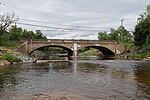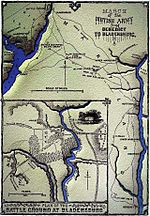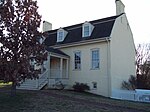Colmar Manor, Maryland
Towns in MarylandTowns in Prince George's County, MarylandWashington metropolitan area

Colmar Manor is a town located in Prince George's County, Maryland, United States. As of the 2010 census, the town had a population of 1,404. As the town developed at the beginning of the 20th century, it assumed a name derived from its proximity to the District of Columbia—the first syllable of Columbia and that of Maryland were combined to form "Colmar". Colmar Manor was incorporated in 1927.
Excerpt from the Wikipedia article Colmar Manor, Maryland (License: CC BY-SA 3.0, Authors, Images).Colmar Manor, Maryland
40th Place,
Geographical coordinates (GPS) Address Nearby Places Show on map
Geographical coordinates (GPS)
| Latitude | Longitude |
|---|---|
| N 38.933888888889 ° | E -76.946944444444 ° |
Address
40th Place 3410
20722
Maryland, United States
Open on Google Maps










